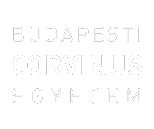Madácsi, Dorottya (2022) The Communicative Values of Women’s Fashion in France During the Jazz Age: A Visual Semiotic Analysis of How Fashion Symbolised the New Womanhood on Print Advertisements. BA/BSc szakdolgozat, BCE Kommunikáció és Szociológia Intézet, Kommunikáció- és Médiatudomány Tanszék.
|
PDF
- Requires a PDF viewer such as GSview, Xpdf or Adobe Acrobat Reader
905kB |
Absztrakt (kivonat)
Women’s fashion in France during the interwar years possessed communicative values through its power to visually symbolise the new womanhood and the novel values of femininity. The economic situation in France after the First World War required women to keep their employment thereby embracing a new economic role and impacting their social, cultural, and political positions and longings. Women’s increased participation in the labour force necessitated a shift in female fashion to allow women more physical freedom to effectively operate at the workplaces. The new design of the dresses not only made women’s economic participation easier by physically freeing the female body, but also became the symbol of women breaking out of the pre-war era’s rigid gender roles by visually manifesting their new social and cultural freedoms. Advertising posters capitalised on women’s longing for liberation and increasingly used fashion to visually metaphorize the values and epitomes of new femininity. The paper aims to analyse and interpret how women’s fashion in France during the interwar years communicated through its power to visually symbolise the modern womanhood. Relying on the work of Hake (1997), Malnig (1999), Proppe (2016) and Roberts (1993, 1998) in the application of Barthes’ visual semiotic framework, the paper examines how the new fashion communicated the values of modern femininity by interpreting the symbolic depiction and connotative meanings of fashion items on advertising posters. The two-level visual semiotic analysis concludes that the analysed advertisements used the bob haircut, the simple and shorter dresses to represent independence, freedom and the idealised “femme moderne”. The modern swimming costumes, slim dresses, female sport attires and the tanned skin were used to symbolise the youthful and active life of the “modern girl” on the sampled advertisements. The outcome of the study aligns with influential theories established by academics about the symbolism of the new fashion and its communicative powers regarding the metaphorization of new womanhood. The future research of primary resources could be directed to study whether and to what extent women embracing this new visual fantasy of liberation promoted a sense of unity that fostered and facilitated later political movements for women’s suffrage.
| Tétel típus: | BA/BSc szakdolgozat |
|---|---|
| Témakör: | Marketing Szociológia |
| Azonosító kód: | 15288 |
| Képzés/szak: | Communication and Media Science |
| Elhelyezés dátuma: | 25 Jan 2023 13:15 |
| Utolsó változtatás: | 25 Jan 2023 13:15 |
Csak a repozitórium munkatársainak: tétel módosító lap

